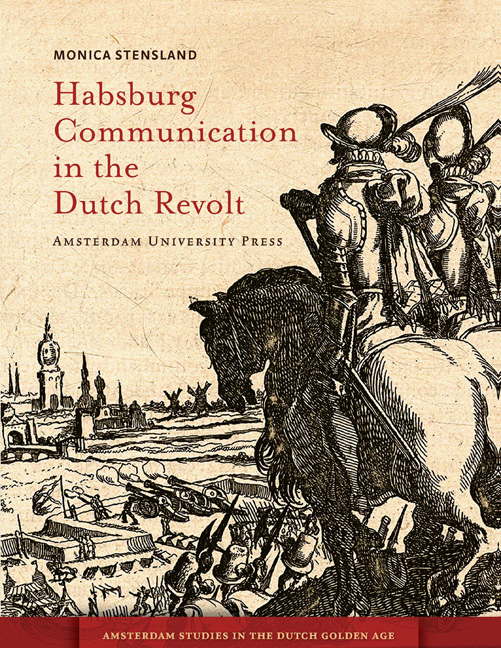Book contents
- Frontmatter
- Dedication
- Contents
- Acknowledgements
- List of Abbreviations
- Notes on References and Translations
- Introduction
- Rooting out Heresy and Rebellion, 1567-1572
- From Rebellion to War, 1572-1576
- The Breakdown of Royal Authority, 1576-1578
- Communicating Reconciliation, 1578-1585
- Losing the Peace, 1585-1595
- A New Beginning, 1596-1609
- Conclusion
- Notes
- Bibliography
- Illustration Credits
- Index
A New Beginning, 1596-1609
Published online by Cambridge University Press: 27 January 2021
- Frontmatter
- Dedication
- Contents
- Acknowledgements
- List of Abbreviations
- Notes on References and Translations
- Introduction
- Rooting out Heresy and Rebellion, 1567-1572
- From Rebellion to War, 1572-1576
- The Breakdown of Royal Authority, 1576-1578
- Communicating Reconciliation, 1578-1585
- Losing the Peace, 1585-1595
- A New Beginning, 1596-1609
- Conclusion
- Notes
- Bibliography
- Illustration Credits
- Index
Summary
Archdukes Albert and Isabella occupy a special place in Belgian historiography. When Albert arrived as Philip's new governor-general to succeed his deceased older brother Ernest, the country was devastated after almost thirty years of continual warfare, for part of the time on more than one front. Yet, within fifteen years, peace had been successfully negotiated with France and England, and the conflict against the rebel Northern provinces had also come to a negotiated, albeit temporary, conclusion. With the end of these conflicts, economic recovery could begin in earnest, and trade, industry and agricultural production increased after years of decline. It is little wonder, then, that the Archdukes’ reign has received so much good press.
The Archdukes’ involvement in public communication, especially the carefully thoughtout religious profile that they projected of themselves, is relatively well known. Luc Duerloo has examined the different strategies at work behind their conscious selection of which religious cults and shrines to support, and Margit Thøfner has detailed their involvement in and conscious use of public ceremonial. What remains less well known is how the Archdukes’ efforts in the field of public communication related to the efforts of their predecessors, as well as the public's response to their endeavours.
Forging sovereignty
The major difference between the Archdukes and their predecessors was their sovereignty. They were the first sovereigns to permanently reside in the Low Countries since Charles V had departed from Spain in 1517, and their arrival finally provided a positive answer to the repeated calls for royal presence in the Low Countries. The States of Brabant had called for Philip's return as late as April 1576, and a ‘prince of the royal blood’ had been requested by various advisors and the Council of State throughout the interim that followed Requesens’ death. Although Don John, Farnese and Ernest had all been close relatives of Philip, as mere governors-general none of them had enjoyed the kind of authority that the Archdukes could now lay claim to.
But the Archdukes’ claim to sovereignty was far from straightforward. Before his death in 1598, Philip had given the Low Countries as a dowry to his daughter Isabella, for her and her husband Albert to rule the provinces together.
- Type
- Chapter
- Information
- Habsburg Communication in the Dutch Revolt , pp. 133 - 154Publisher: Amsterdam University PressPrint publication year: 2012



